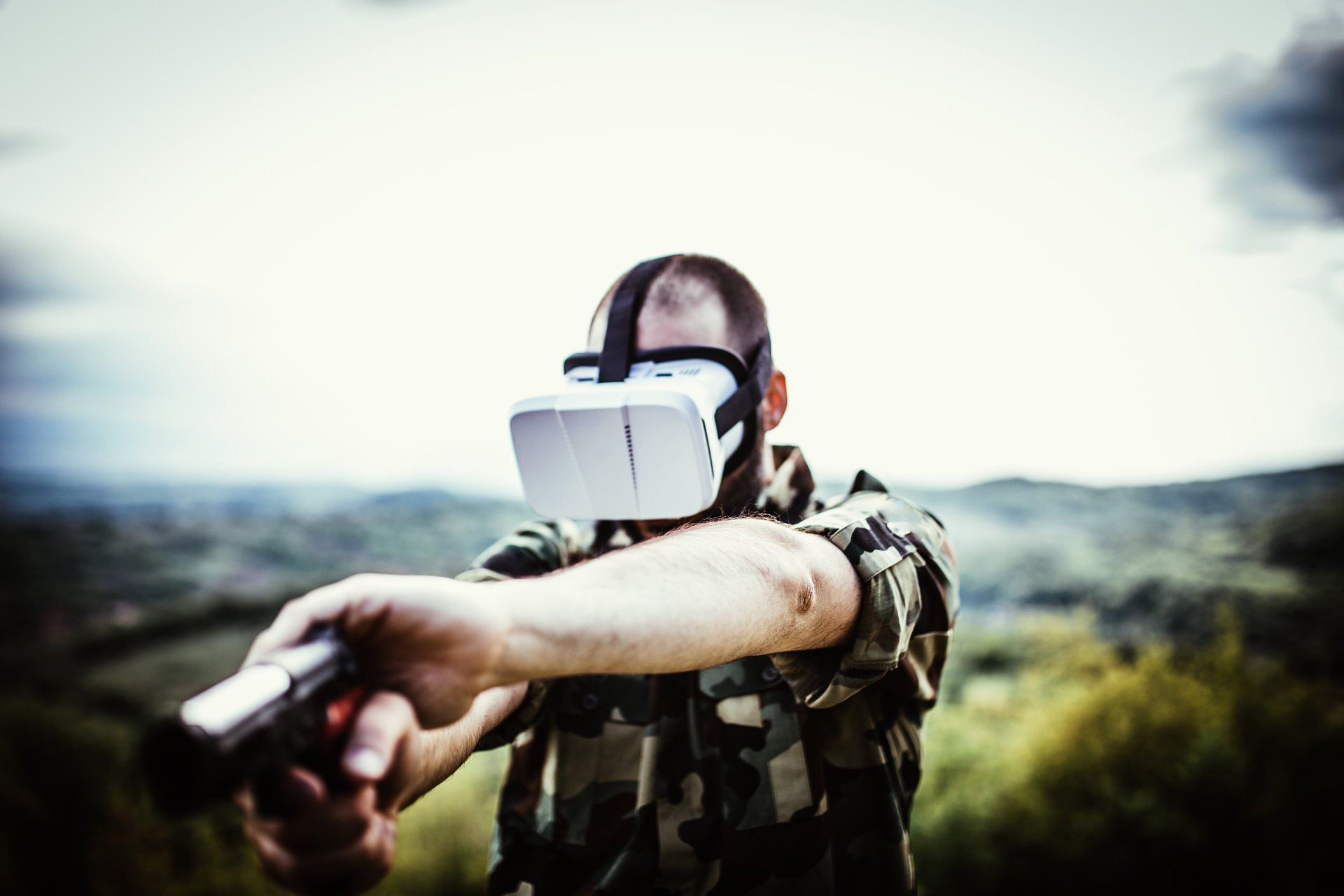VR finally finds its killer app: war
Virtual reality is poised to transform the battlefield, as defense contractors race to put mixed reality headsets on soldiers’ heads

Getty Images
A version of this article originally appeared in Quartz’s members-only Weekend Brief newsletter. Quartz members get access to exclusive newsletters and more. Sign up here.
After years of searching for mainstream adoption beyond gaming and entertainment, virtual reality has finally found its killer app — literally. The technology that once promised to revolutionize everything from shopping to socializing is now poised to transform the battlefield, as defense contractors race to put mixed reality headsets on soldiers’ heads.
While companies such as Meta have poured billions into building the metaverse for civilian use, it’s military applications that are driving real investment and deployment at scale. The transformation is embodied by the unlikely reunion between Meta and Palmer Luckey, the VR pioneer who was fired from Facebook in 2017 after selling it Oculus, the startup he co-founded, for $2 billion. Now, through his defense company Anduril Industries, Luckey has become the military’s VR gatekeeper — and Meta needs his help to enter the lucrative defense market.
The partnership announced last month between Meta and Anduril to develop “EagleEye” extended reality devices for the U.S. Army represents more than just a business deal. It’s a homecoming that expands Luckey’s technological options to include Oculus hardware that he wants to use to turn soldiers into what he calls “technomancers.”
“This move has been so many years in the making, over a decade of hacking and scheming and dreaming and building with exactly this specific outcome clearly visualized in my mind’s eye,” Luckey wrote on his blog. “I can hardly believe I managed to pull it off.”
Since founding Anduril in 2017 after his Facebook exit, Luckey has been methodically building toward this moment. He assembled a team largely from Palantir, the secretive data analytics firm that serves intelligence agencies and military clients, secured more than $1 billion in defense contracts, and positioned the company as a disruptor to traditional defense giants like Boeing and Lockheed Martin.
The EagleEye system will carry sensors that enhance soldiers’ hearing and vision, able to detect drones flying miles away or spotting hidden targets. More significantly, it is supposed to allow soldiers to operate AI-powered weapon systems, creating a seamless interface between human decision-making and semi-autonomous military technology.
This collaboration stems from the Army’s $22 billion Integrated Visual Augmentation System program, originally awarded to Microsoft but transferred to Anduril in February after Microsoft failed to deliver a functional headset.
The Meta-Anduril partnership reflects Silicon Valley’s broader evolution toward defense work — and a striking reversal of fortune for Luckey. He was fired from Facebook in 2017 after donating to a group opposing Hillary Clinton, triggering an internal campaign to oust him for his conservative politics.
Now those same political views have become a strategic advantage. The Trump administration is pushing for a trillion-dollar Pentagon budget and urging the military to adopt commercial technology from venture-backed startups and tech companies rather than traditional defense contractors. Luckey’s early support for Donald Trump and his defense advocacy position him perfectly for this moment.
Meta has recruited former Pentagon staff and opened its AI models for military applications, while Anduril has secured partnerships with OpenAI, Oracle, and Palantir. The company’s valuation has skyrocketed to $30.5 billion.
The military’s VR adoption is driven by practical necessities that don’t exist in consumer markets. Traditional military training is expensive and time-consuming, often requiring significant resources and posing safety risks. VR training can be deployed anywhere, repeated endlessly, and modified instantly to address new threats.
Building VR for warfare presents unique challenges far beyond consumer applications: Combat headsets must withstand extreme conditions while providing crystal-clear intelligence in life-or-death situations. The interfaces must work intuitively under immense stress, resist enemy hacking attempts, and integrate seamlessly with existing military systems.
The Army isn’t new to VR, but much of its current deployment focuses on everyday training situations where the consequences are serious but not immediately lethal. At Fort Liberty, North Carolina, the 82nd Airborne Division uses VR headsets to train soldiers on sexual harassment intervention, transporting troops into realistic scenarios where they must practice speaking up.
The realism proves crucial for building what Army leadership calls “courage muscles.” In suicide prevention training, soldiers enter a virtual room where a distressed fellow soldier surrounded by empty bottles reveals feelings of hopelessness. Participants describe physically feeling the stress, forcing them to practice intervention techniques in a safe but realistic environment.
“This is an opportunity to improve scenario-based training with realism,” Sergeant Major of the Army Michael Weimer told GovTech. “When that moment pops up that’s real, it’s less awkward.”
As warfare becomes increasingly digital, VR may have finally found more than just its defining purpose. The technology that promised to change how we work and play is instead changing how we fight — and in doing so, may finally live up to its transformative potential, for better or worse. The outcome will largely depend on who controls this technology — and Luckey has signaled he’s just getting started.
“Whatever you are imagining, however crazy you imagine I am, multiply it by ten and then do it again,” Luckey said in his blog. “ I am back, and I am only getting started.”